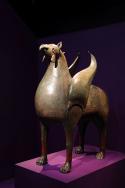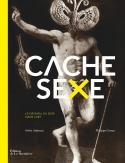Art Of The Day Weekly
#360 - from 16 October 2014 to 22 October 2014
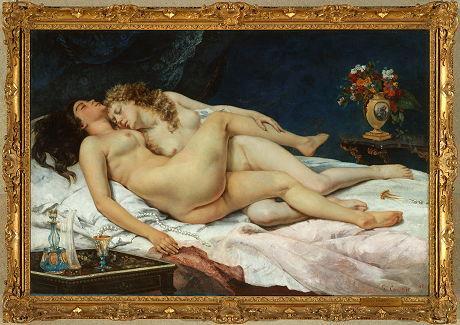
Gustave Courbet (1819-1877), Le Sommeil, 1866, oil on canvas, 135 × 200 cm. Paris, Petit Palais, musée des Beaux-Arts de la Ville de Paris, © RMN-Grand Palais / Hervé Lewandowski (exhibition at the musée d'Orsay, Paris)
IN THE AIR
Sade's lesson
PARIS – Thanks to the catalogue -real or imaginary - of his sexual follies, his name is familiar to all. But the influence of marquis de Sade (1740-1814) goes beyond his licentious exploits. He was strongly opposed to any established powers, such as the Church, nobility or the Army, and praised individual freedom of both body and mind when facing duties and conventions, and he was ready to sacrifice his own freedom for his ideas. He did spend 27 years in priso, as long as a certain Nelson Mandela. He was an man of the encyclopedia of the enlightment and anticipated anarchy. How can we measure his influence through art, painting and movies? The musée d’Orsay has taken on that challenge, bringing forward the symbolists (Moreau, Redon), the surealists (Dalí, Masson), and a series of heretical and cursed artists (Pierre Molinier), with a taste for excess, atheism, perversion, madness and of course unlimited lust. These are surely new frontiers of which Sade is the pioneer explorer.
• Sade, attaquer le soleil at the musée d’Orsay, from 14 October 2014 to 25 January 2015.
OBJECT OF THE WEEK
Sade, the last scroll
In September 1795, for twenty evenings, in the silence of the Bastille where he was in prison, Sade recopied in minute handwriting what would become his most famous work, the 120 Days of Sodoma. He glued pieces of paper tip to tip,and ended up with a scroll 12 metres long which he hid in a case, behind a stone in the wall. When he was transfered to the asylum of Charenton, a few days before 14 July 1789, he was not able to take his manuscript, which he thought was lost for ever like most of his commentators, until it reappeared in Germany at the beginning of the 20th century when the owner, the dermatologist-sexologist Iwan Bloch, gave a first transcription. The adventures of the scroll are as wild as the life of marquis de Sade. It was bought by vicomte Charles de Noailles in 1929 (his wife, Marie-Laure, was a descendant of Sade). It was lent in 1982, to be analyzed, to the publisher Jean Grouet, the former secretary of Françoise Sagan, who sold it fraudulously to a Swiss collector, Gérard Nordmann. It took thirty years of trials and mediations to reach a solution: the scroll was bought in the spring of 2014 by the musée des Lettres et Manuscrits for the slight sum of €7 million, including the indemnisation of the Noailles family.
• The scroll, partially urolled, is at the centre of the exhibition Sade, marquis de l’ombre, prince des Lumières at the musée des Lettres et Manuscrits, until 18 January 2015.
EXHIBITIONS
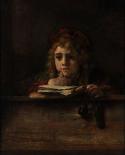
Rembrandt, Titus at his Desk, 1655, oil on canvas, 77x63 cm. Museum Boijmans Van Beuningen, Rotterdam © Museum Boijmans Van Beuningen Foundation / Photo: Studio Tromp, Rotterdam
Rembrandt's swan song
LONDON – This is the victory of the older generation over the trend for all that is young! Following Turner at the Tate Britain (started 10 September), here is Rembrandt at the National Gallery. Not as a young triumphant painter but as an elderly master, ill and alone (in 1660, at the age of 60, he had lost all his wives and children). But he knew how to reinvent himself to produce the most revolutionary painting of his time. More than three centuries later, it continues to be a source of surprise and inspiration through his realistic introspection, his play with lights and matter, his reinterpretation of canonical motifs.
• Rembrandt: The Late Works at the National Gallery, from 15 October 2014 to 18 January 2015.
• According to the Wall Street Journal, the Rembrandt Research Project is getting reattributing to Rembrandt 70 paintings which had previously been taken out of his corpus.
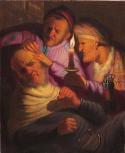
Rembrandt, The head operation, c. 1624/25, oil on panel, 21,6 x 17,8 cm. The Leiden Collection, New York © The Leiden Collection, New York.
Dutch emotions
LEYDE – The death of Lucretius, Christ crowned with thorns, an operation of the brain without anesthesia? Or Venus and Cupid frolicking about, Loth looking over his daughters, shepherds enjoying the pleasures of love? The exhibition explores how the Dutch masters rendered the two antagonistic facets of life - suffering and joy.
• Emotion, pain and pleasure in Dutch painting of the Golden Age at Frans Hals Museum, from 11 October 2014 to 15 January 2015.
Morocco, the golden age
PARIS – In a time of Islamic extremism, it is best that we remember that there has also been in parallel a refined Islam - and often more tolerant that Christians at the same periods. The Louvre invites us to plunge into the glorious centuries of Morocco (11-15th centuries), when the Almoravid and Almohad dynasties reigned in Andalucia, when Sevilla and Fes were the most advanced citis in the world. Minbars, manuscripts (of which a rare exempal of the Jewish philosopher Maimonides), ceramics, elements of architecture tell us the story of an period of prosperity and intellectual research, and show us a rarely seen facet of Al-Andalus.
• Maroc médiéval at the musée du Louvre from 17 October 2014 to 19 January 2015.
Images from the Great War
PARIS – How did artists react to the horrors and excesses of World War I? Images of propaganda, photos from reporters, experiments by the Futurists, portraits of pain: in this year of memory this is one of the most complete gatherings with around 400 works, from Vallotton to Roger de La Fresnaye, including Georges-Victor Hugo and Otto Dix.
• Vu du front, représenter la Grande Guerre at the musée de l’Armée, from 15 October 2014 to 25 January 2015.
AUCTIONS
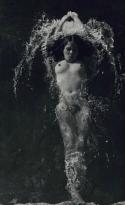
Lot n° 16. Nage, Lily, Roscoff, 1933, silver print, seal of the photographer and number of the negative in blue ink at the back of the print 24 x 14.7 cm paper 24 x 18.2 cm. Estimate: 1200-€1500.
Steiner, madly in love
PARIS – He is part of that extraordinary Hungarian diaspora which left its imprint on photography in Paris in the period between the two wars. André Steiner (1901-1978) was never as famous as Robert Capa, Kertész or Brassaï but he was an active member of the New Vision movement. He made experiments as much as Man Ray (with his solarizations, photograms and double exposure), but he is mostly known for having documented in an almost obsessive manner his love for his wife. She, Lily, was a swimming champion of the Jewish circle of Hakoah in Vienna (the movie Watermarks, by Yaron Zilberman, traces the tragic destiny of this team). She was the exclusive model of his nudes and his portraits. Intimate or, on the contrary, with a war-like aesthetics (a converging tendency between the Communists and the Fascists at the time), they mark Steiner's short period of glory. After separating from his wife and his entering the Resistance, he disappeared from the photography world. Close to 200 images, estimated between €500 and €5000, describe his itinerary.
• André Steiner 21 October 2014 at Drouot-Richelieu (Binoche & Giquello)
BOOKS
Emasculated painting
"No Sex Please, We’re Artists": we could almost borrow this sentence from a famous English play to prove the censure that weighed down for centuries on the representation of sexual organs in painting and sculpture. The famous Origine du monde by Courbet in 1866 was an isolated flash of lightning: in the middle of the 20th century, its owner, Jacques Lacan, had even had a painting-screen by André Masson to hide it (shown at the exhibition) and it was only presented to the public for the first time in 1988. The authors carried out a pleasant investigation on the strategies to hide and cover, which owe a lot to the Christian religion: the Savior had aperizonium as of the first centuries while the condemned were crucified nude. From the fig leaf in the Book of Genesis (which in Europe became a grape leaf), up to the loincloth, the screens are very varied: the branch of a cactus for Abel, a sword sheath for Mars or Belisarius, her hair for Venus or his club for Hercules. But there were also pieces of cloth, grape seeds, feathers, petals, even butterflies! With a perverted effect as well: these obstacles have a tendency sometimes to attract the eye precisely where it is not supposed to focus.
• Cache-sexe, le désaveu du sexe dans l’art, by Sylvie Aubenas and Philippe Comar, La Martinière, 2014, 240 p., €52.
IN BRIEF
LONDON – The modern and contemporary art fair Frieze will be held from 15 to 18 October 2014 at Regent’s Park.
PARIS – Pierre Bergé, the former companion of Yves Saint Laurent, has announced the sale of his personal library - manuscripts and books from the 15th to the 20th centuries - in seven themed sales, starting December 2015.
PARIS - The Réalités nouvelles fair, fonded in 1946 and dedicated to abstract art, will be held from 19 to 26 October 2014 at the Parc floral.


